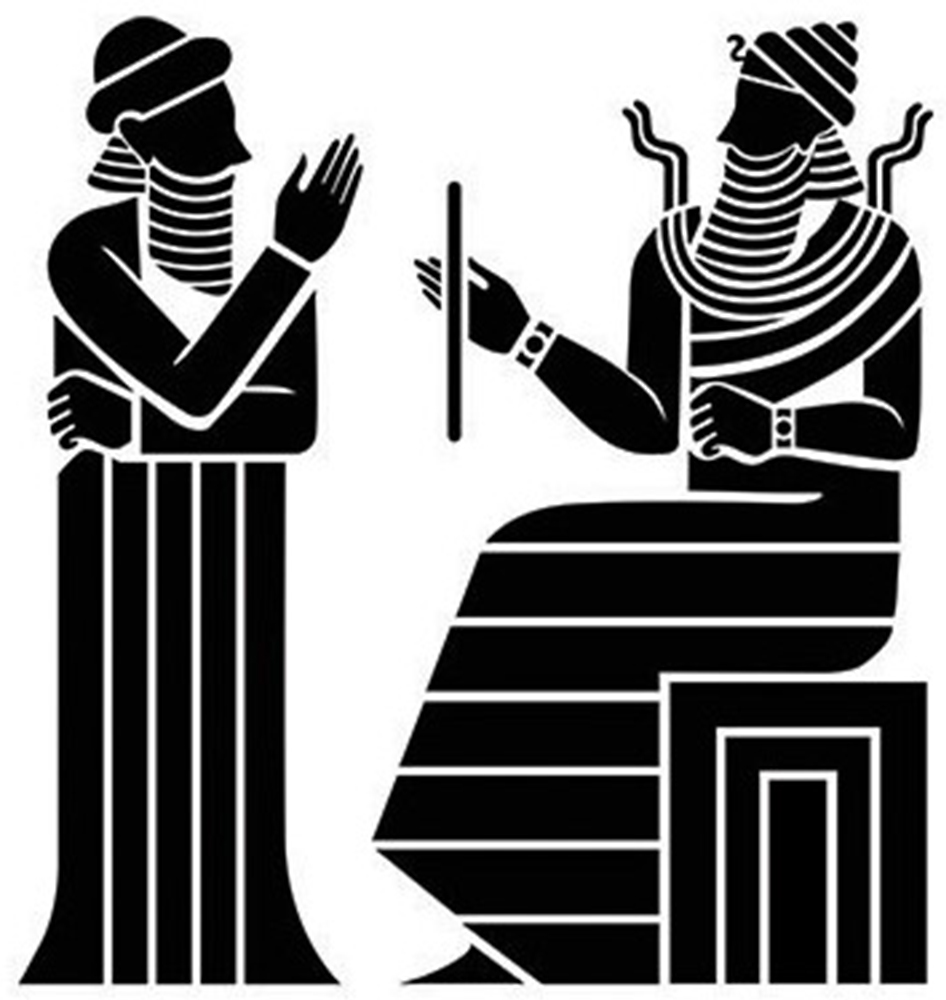Basic facts
Who
This website was designed, developed, and implemented by Boban Dedović, a psycholinguist with a background in technology. It is managed under the auspices of the OMNIKA Foundation.
What
The Electronic Hammurabi website, ehammurabi.org, is a digitization project made available to the public thanks to partial funding from the OMNIKA Foundation, a 501(c)(3) nonprofit organization based in Nevada, USA, whose mission is to organize and make freely available all the world's mythological contents.
When
Established February 14, 2021
Where
The University of Chicago, Chicago, IL, USA
Why
Whilst attending graduate school at the University of Chicago, Boban Dedović was enrolled in a Mesopotamian Law class taught by the most learned Martha T. Roth. Dedović was also studying the Akkadian language at that time. Upon review of existing digital resources, it came to pass that there was no single authoritative source that combined those contents organized herein. It was therefore necessary, in order to remedy this lacuna, to construct the ehammurabi.com website. For those with technological means, it is hoped that ehammurabi.com will cause to enable others to contribute to other digitization efforts. For the general public, the present resource hopes to invite interest and study of ancient languages instead of admiring them from afar.
Contact
For any questions, concerns, or comments, go to https://omnika.org/info/about/contact in order to contact the OMNIKA Foundation.
eHammurabi case study
Title
eHammurabi.com: A case study on developing user-friendly digital tools for complex ancient languages like Akkadian
Author
Boban Dedović
Date submitted
May 23, 2023
Status
Preprint: currently undergoing peer review in a prominent digital humanities journal.
Summary
This case study outlines how the eHammurabi.com digital tool was built by describing its development from start to finish. The Law Code of Hammurabi was created in c. 1750 BCE and is well-known for being one of the oldest and most important legal texts in recorded human history. (Source: OMNIKA)
Citation
Dedović, Boban. "eHammurabi.com: A case study on developing user-friendly digital tools for complex ancient languages like Akkadian." Preprint. Chicago, IL: University of Chicago, 2023. [DOI: 10.6084/m9.figshare.23092748]
Abstract
"If a man has destroyed the eye[sight] of another man, they shall destroy his eye[sight]," so reads provision §196 of the Law Code of Hammurabi, dated c. 1750 BCE, one of the oldest and most important legal texts in recorded human history. Many probably recognize this provision as the principle of "an eye for an eye." However, the original source materials from which it is derived from are less known. To unpack the inscription's linguistic contents, one must negotiate the complexities of the Akkadian language alongside other challenges unique to the study of ancient languages in general. Existing digital humanities projects have assisted researchers via the distribution of relevant scholarly materials. Notwithstanding, there is no authoritative, widely-available resource that consolidates multiple publications into a single resource. The eHammurabi.com project sought to remedy this state of affairs by means of building a simple-to-use digital tool. The present case study outlines how this new tool was built by describing its development from start to finish. A systematic review of existing digital tools was conducted before development began. Three arguments were posited: (1) digital tools like eHammurabi.com must be both an aggregator and redactor of data from authoritative publications; (2) the user interface is most important; and (3) the user interface must be designed in accordance with a singular, pre-determined user goal that can be measured objectively. The goal of eHammurabi.com was to enable users to find relevant linguistic contents for a given statute as quickly as possible. Certain features of the user interface seemed to satisfy this goal: a single-page website for all 282 statutes; a vertical multi-panel display that contains all required contents for each statute; and a persistent left-side navigation menu. Following the website's launch, a user study was conducted. Our data suggest that eHammurabi.com enables users to find a statute's contents roughly ten times faster in comparison to print books and PDF files. These results support our arguments. Website traffic data suggest that external reception has been positive. Further research is likely required. Implications for practitioners of digital humanities are discussed. Interdisciplinary cooperation amongst language experts and computer scientists is recommended. (Source: Author / Boban Dedović)
News and milestones
Jan. 26, 2023
eHammurabi promo video released. Watch on YouTube
Nov. 27, 2023
May 23, 2023
Boban Dedović releases a preprint of his forthcoming journal article that details the development of the eHammurabi (Electronic Hammurabi) project. It is titled "eHammurabi.com: A case study on developing user-friendly digital tools for complex ancient languages like Akkadian." Read
Sep. 5, 2022
The OMNIKA Foundation, a 501(c)(3) nonprofit, takes over management of eHammurabi.com. About
Jul. 31, 2022
Version γ 2.1.0 of eHammurabi is released (stable release). More
Jul. 4, 2021
Version β 1.1.0 of eHammurabi is released (unstable release).
Feb. 14, 2021
Version α 0.1.0 of eHammurabi is released (unstable release). More
Jan. 20, 2021
Boban Dedović creates a prototype of Electronic Hammurabi using spreadsheet software while at the University of Chicago. More
Technology
Licenses
The ehammurabi.org website makes use of both open-source and commercial softwares, tools, and technologies.
Core
LAMP: Linux operating system, Apache web server, MySQL database, and PHP scripting language.
Languages
PHP, HTML, CSS, Javascript, and XML.
Libraries
jQuery, Bootstrap 5, and others.
Design
OMNIBUS theme by OMNIKA Foundation, Material Design by Google, Roboto font by Google, Material Icons by Google, and FontAwesome icons by FontAwesome.
Services
Google Analytics, Google Tag Manager, Cloudflare DNS, and Cloudflare SSL.
Main sources
Abbr.
Citation
Contents
Abulhab, Saad D. The Law Code of Hammurabi: Transliterated and Literally Translated from its Early Classical Arabic Language. New York, NY: Blautopf, 2017.
Bergmann, Eugen. Codex Ḫammurabi: Textus Primigenius. Rome, Italy: Pontificium Institutum Biblicum, 1953.
Huehnergard, John. A Grammar of Akkadian (Third Edition). Winona Lake, IN: Eisenbrauns, 2011.
Huehnergard, John. Key to a Grammar of Akkadian (Third Edition). Winona Lake, IN: Eisenbrauns, 2013.
Jiménez, Enrique, et al. "Electronic Babylonian Library." München, Germany: Ludwig-Maximilians-Universität München. Accessed February 28, 2024. https://www.ebl.lmu.de. [Visit]
Lauffenburger, Olivier. "AAF Assyrian Dictionary." France: Association Assyrophile de France. Accessed August 28, 2023. https://www.assyrianlanguages.org. [Visit]
Richardson, Mervyn E.J. A Comprehensive Grammar to Hammurabi's Stele. Piscataway, NJ: Gorgias Press, 2014.
Richardson, Mervyn E.J. Hammurabi's Laws: Text, Translation and Glossary. New York, NY: T & T Clark International, 2004.
Sound of Text Contributors. "Sound of Text: AI Text-to-Speech." Accessed November 14, 2023. https://soundoftext.app. [Visit]
Citation
Dedović, B. "About - eHammurabi." OMNIKA Foundation, 10 Oct. 2023, ehlaw.org/info/about. [Accessed 5 May. 2024]
Dedović, B. (2023, October 10). About - eHammurabi. OMNIKA Foundation. https://ehlaw.org/info/about
Bibliography
OMNIKA Foundation Contributors. "OMNIKA: Digital Mythology Library & Search Engine." Las Vegas, NV: OMNIKA Foundation, accessed November 14, 2023. https://omnika.org. [Visit]
eHammurabi Glossary
The number 282 commonly denotes "the commonly accepted number of individual legal provisions in the Law Code of Hammurabi."
Read moreeHammurabi Glossary
Click here to learn more about § 16 and find other relevant terms related to the Law Code of Hammurabi.
Read moreeHammurabi Glossary
Click here to learn more about § 3 and find other relevant terms related to the Law Code of Hammurabi.
Read moreeHammurabi Glossary
Click here to learn more about Merchants and find other relevant terms related to the Law Code of Hammurabi.
Read moreeHammurabi Glossary
Click here to learn more about A Grammar of Akkadian (Third Edition) and find other relevant terms related to the Law Code of Hammurabi.
Read moreeHammurabi Glossary
The term Apodosis commonly means "the part of the sentence that expresses the consequence, Y, in an 'if X, then Y' conditional statement."
Read moreeHammurabi Glossary
Assyriology is the study of languages, cultures, and civilizations of ancient Mesopotamia.
Read moreeHammurabi Glossary
The term Conditional Statement commonly means "a type of sentence that contains a requirement, or condition, and consequence, as in 'if X, then Y'."
Read moreeHammurabi Glossary
The term Cuneiform commonly means "an ancient writing system used by various cultures around Mesopotamia."
Read moreeHammurabi Glossary
Click here to learn more about Laws and find other relevant terms related to the Law Code of Hammurabi.
Read moreeHammurabi Glossary
Click here to learn more about Library and find other relevant terms related to the Law Code of Hammurabi.
Read moreeHammurabi Glossary
The term Louvre Museum commonly means "a museum in Paris, France, and the location of Hammurabi's original stele."
Read moreeHammurabi Glossary
The term Marduk commonly means "an ancient Mesopotamian deity associated with the city of Babylon."
Read moreeHammurabi Glossary
Click here to learn more about Martha Tobi Roth and find other relevant terms related to the Law Code of Hammurabi.
Read moreeHammurabi Glossary
The term Mesopotamia commonly means "a Greek name for modern-day Iraq that means 'land between two rivers'."
Read moreeHammurabi Glossary
The term Normalization commonly means "the application of grammatical rules unto transliterated sound values."
Read moreeHammurabi Glossary
The term Old Babylonian commonly means "an ancient dialect of the Akkadian language spoken and written in Mesopotamia between c. 2100–1400 BCE."
Read moreeHammurabi Glossary
The term Protasis commonly means "the part of the sentence that expresses the condition, X, in an 'if X, then Y' conditional statement."
Read moreeHammurabi Glossary
Click here to learn more about Scholarship and find other relevant terms related to the Law Code of Hammurabi.
Read moreeHammurabi Glossary
The term Stele commonly means "a rectangular, upright stone structure commonly found in the ancient world."
Read moreeHammurabi Glossary
The term Susa commonly means "an ancient Elamite city in modern-day Khuzestan Province, Iran."
Read moreeHammurabi Glossary
The term Translation commonly means "the conversion of linguistic contents and their meanings from one language into another."
Read moreeHammurabi Glossary
The term Transliteration commonly means "the conversion of sound values from one writing system into another."
Read more
